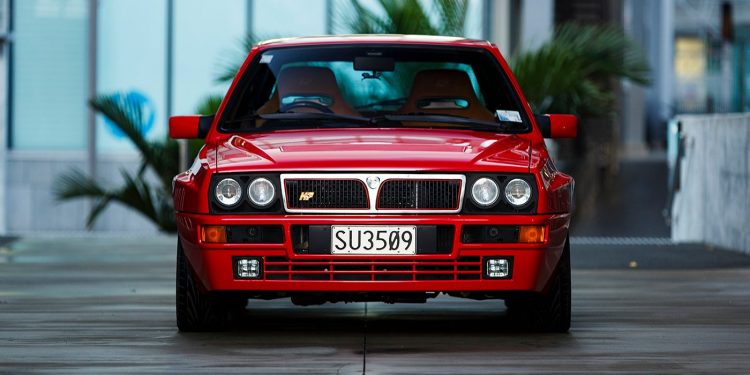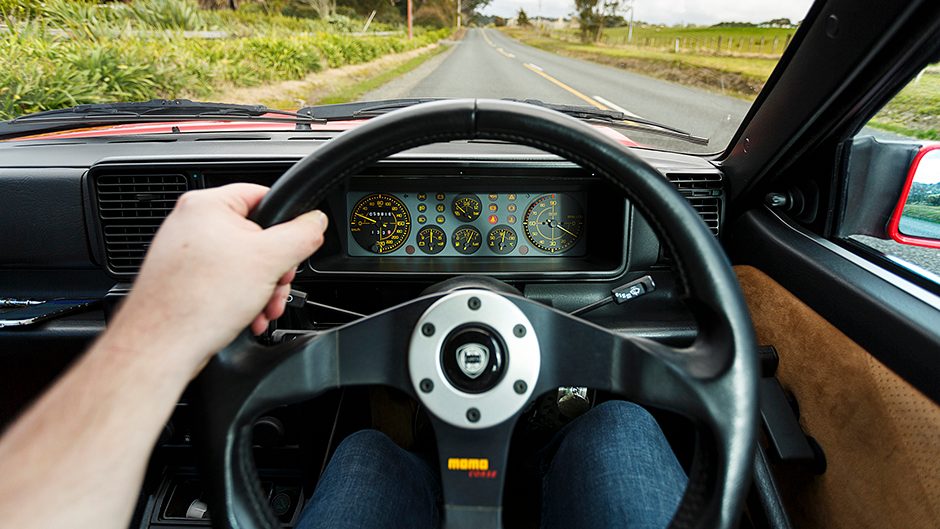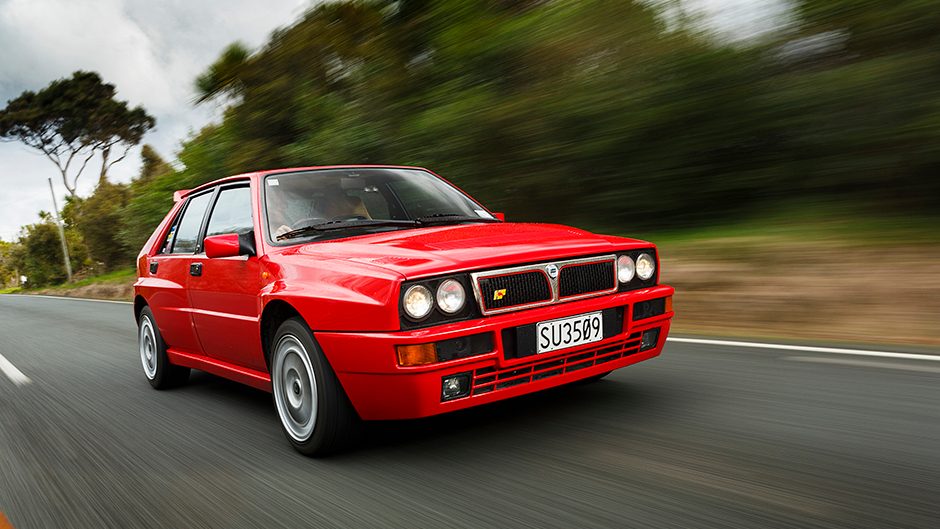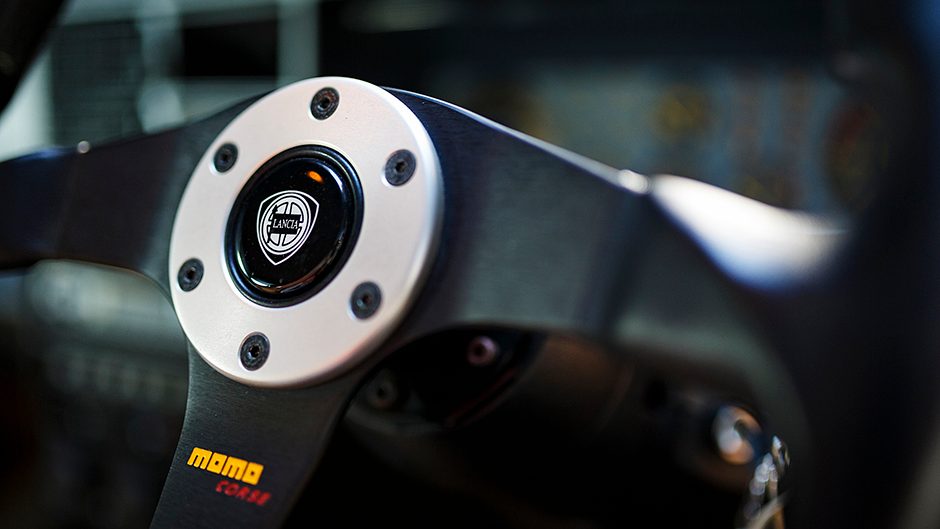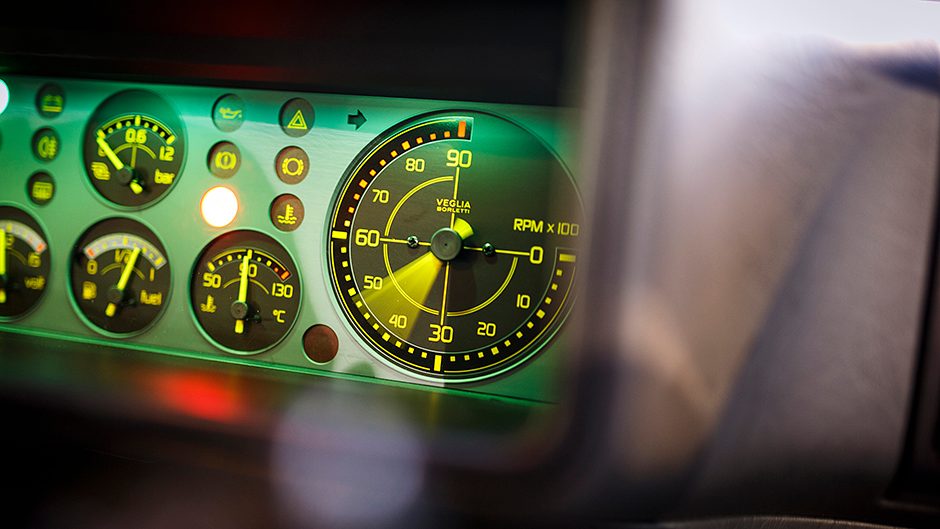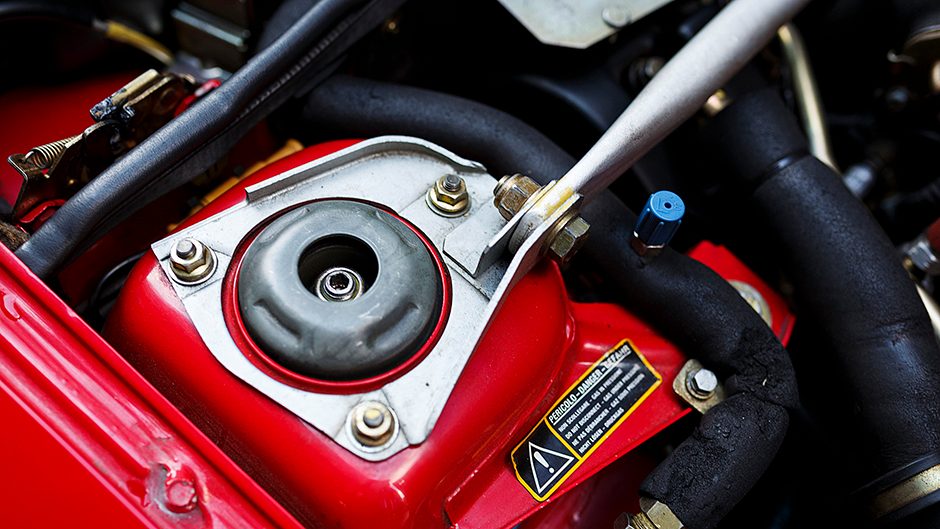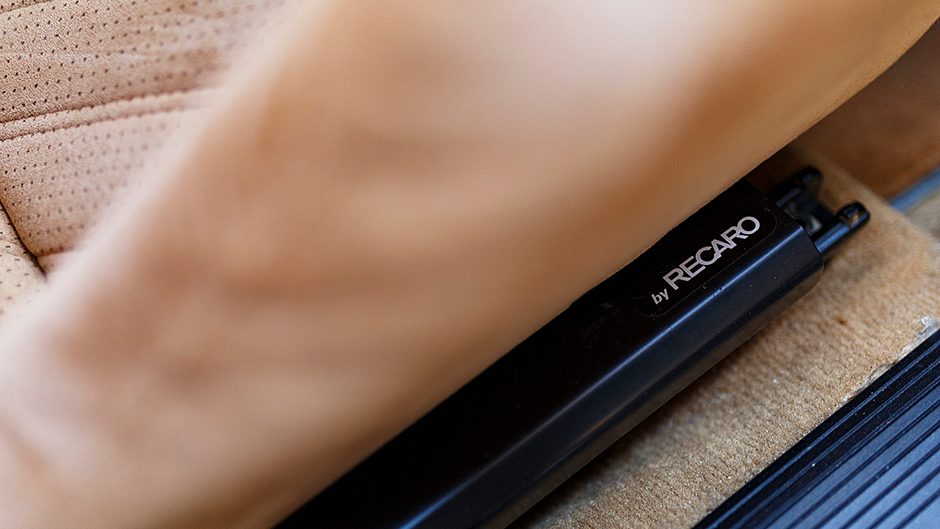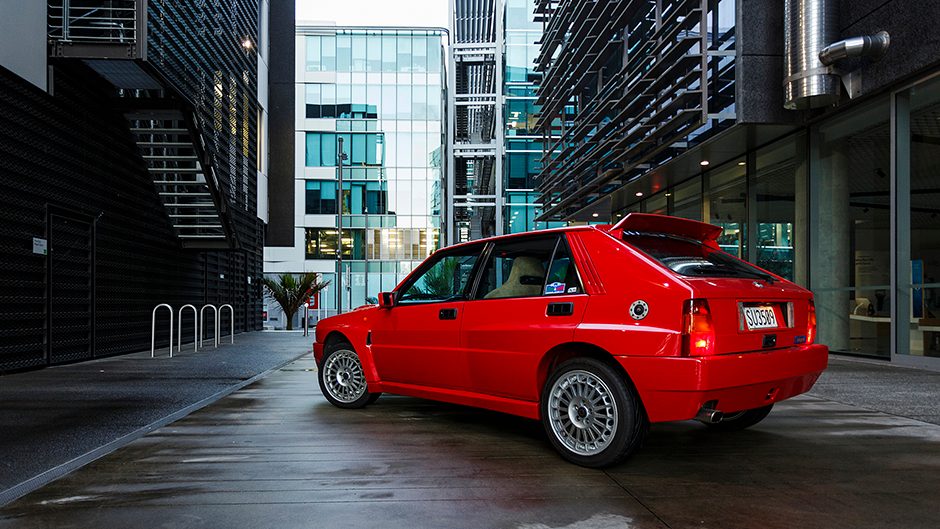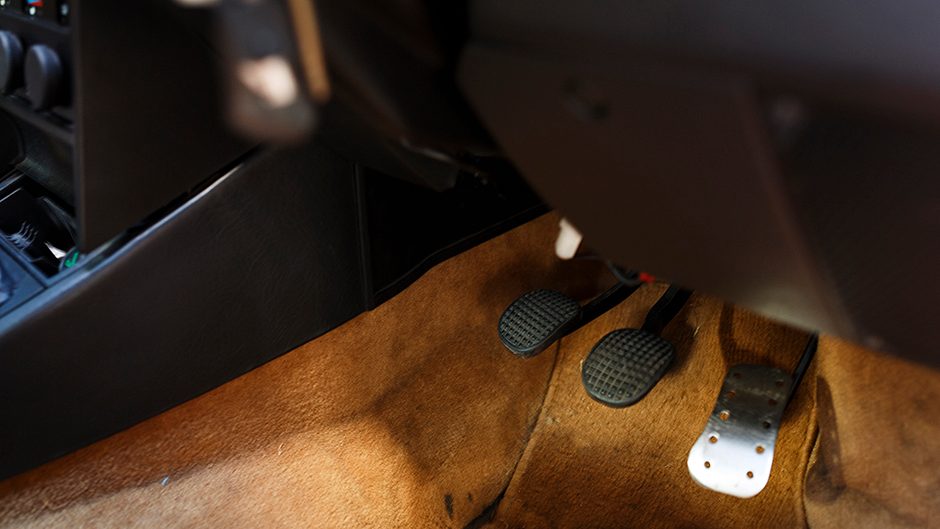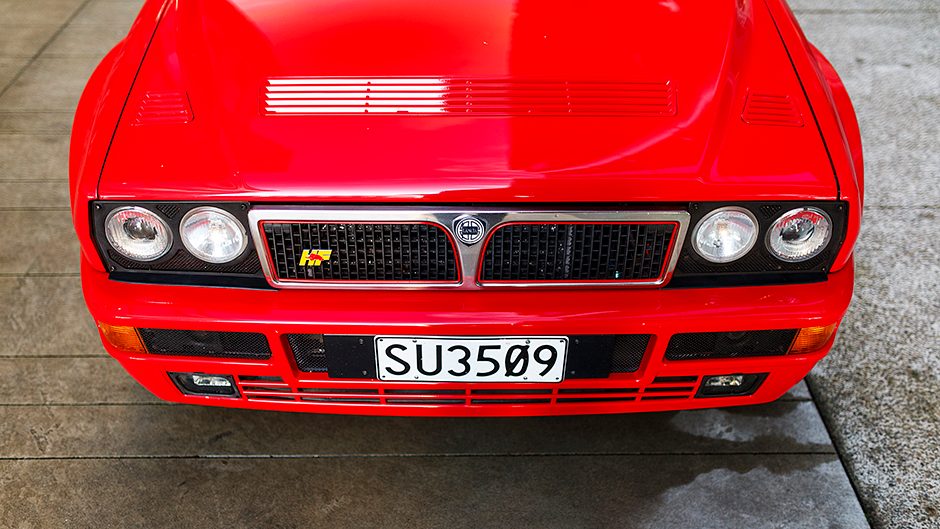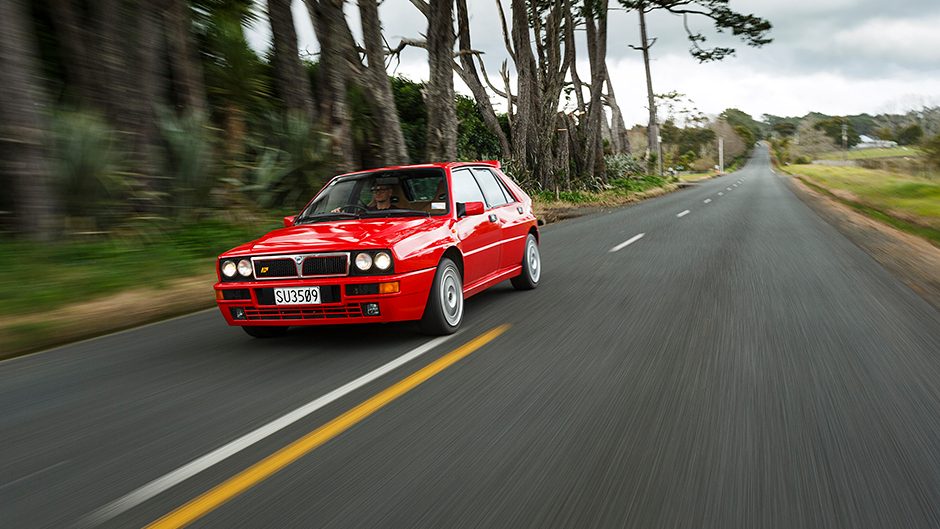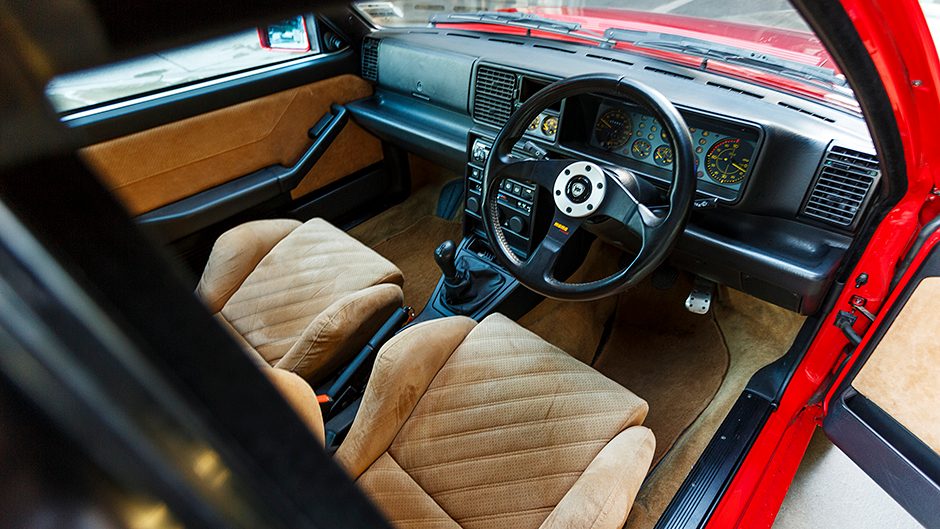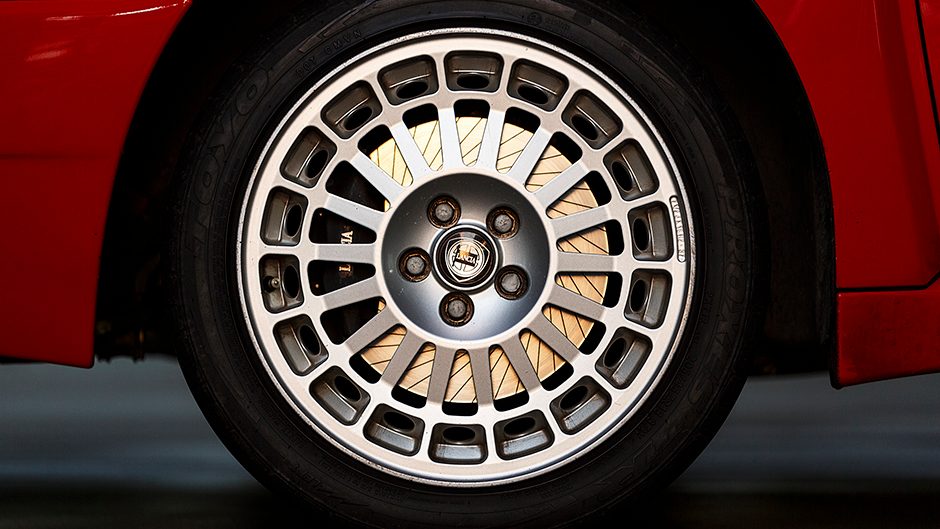1994 Lancia Delta Integrale HF Evo
Words Richard Opie | Photos Richard Opie
For the love of victory – the Lancia Delta Integrale epitomised the group A rallying era. We unearth the history of the ridiculously successful Italian and plug ourselves in for a drive experience.
In 1986, the world of rallying had been dominated by the aggressive crackle and chirrup of a new era of turbocharged gravel weaponry. Group B had ensnared the imagination of rallying’s faithful for the past four seasons with four-wheeled missiles that attracted special-stage thrill seekers by the tens of thousands. Drivers became superheroes, taming explosive balls of composite and steel rage.
As the gravel-borne arms race gathered momentum, tragedy appeared inevitable. Both spectator and driver fatalities marred the final chapters of Group B competition. Henri Toivonen’s Lancia Delta S4 left the road on May 2 1986 while leading the Tour de Corse. Toivonen and co-driver Sergio Cresto were found later among the charred wreck of their Lancia supercar. One of rallying’s brightest stars had burned out, and with it the FIA stepped in swiftly. Group B was done.
For the 1987 season, the FIA had mandated Group A would become the top-tier category. Group A painted a less exciting picture based on modified production-derived cars. The class had existed since the early 1980s, but as an also-ran versus the Group B monsters. Once the spotlight was cast on Group A, one manufacturer stood out amongst the rest with an apparent tailor-made platform among its production line-up. In a turn of irony, Lancia was best equipped to deal with the introduction of Group A thanks to its Delta HF 4WD. Penned by Giugiaro, the boxy Delta hatchback rolled from the showrooms late in 1979.
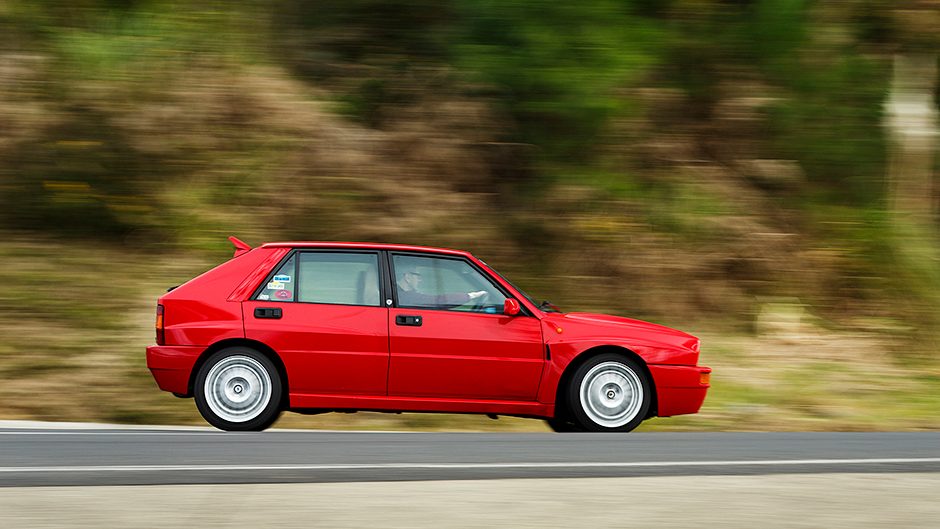
Inspired by the success of the VW Golf, Lancia saw an opportunity to mimic Wolfsburg’s sales fortunes and planned a two-box hatch of its own. With typically peppy 1.3 and 1.5 litre SOHC powerplants the Delta won the European Car of the Year in 1980. While not yet legendary, the facelift in 1982 kick-started what would eventually become rallying lore. The Delta HF launched, sporting a Garrett-boosted 1600cc twin-cam pumping around 130hp through the front treads. The car morphed into the Delta HF Turbo for 1985 – debuting alongside the homologation Group B Delta S4 – with minor tweaks, before being usurped at the top of the Delta hierarchy by the HF 4WD in 1986.
This would become the dominant face of Group A the following year. With a 2.0-litre, eight-valve turbocharged twin-cam, it made 165hp in road-going trim. A trick 4WD system, using a torsen rear diff, was wedged under the Delta floor pan, with a torque split of 56:44 front to rear. On the rally stages it shone like a diamond. With an uprated 250hp on tap, the Delta HF 4WD snagged nine victories in 1987, the manufacturer’s title for Lancia and driver’s crown for Juha Kankkunen.
The Lancia Group A avalanche had begun. Success for the HF 4WD continued the following season, although the factory’s lead rallying engineer, Claudio Lombardi, had identified its shortcomings; excess weight, insufficient suspension travel and associated wheel arch space and cooling issues. Addressing these problems saw the birth of the Delta HF Integrale.
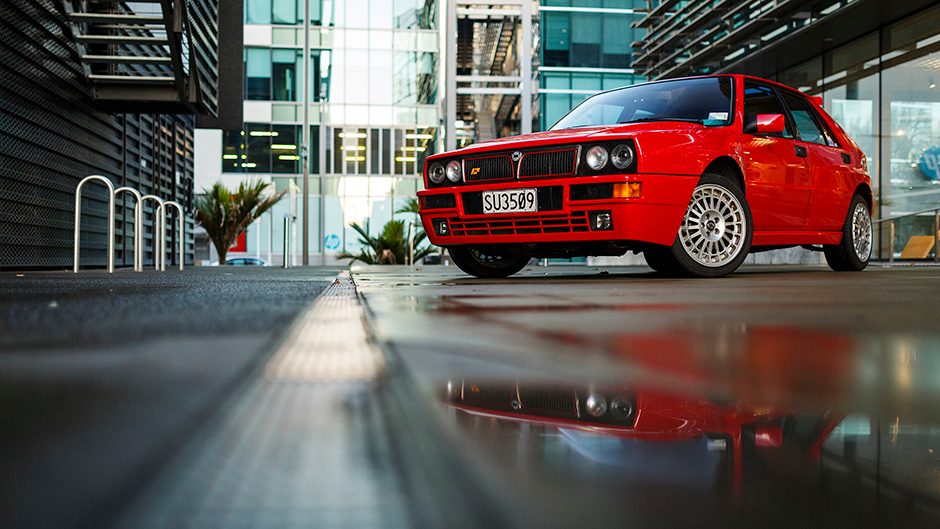
Outwardly, it was identifiable by the boxed wheel arch extensions and larger front bumper apertures and bonnet venting. This was a WRC winner that could be bought off the showroom floor. Bigger 15-inch wheels filled the cavernous arches. The extra cooling meant a larger turbo, intercooler and more boost, and power was up to 185hp. It’s WRC performance elevated the Delta from legendary to miraculous. Lancia owned the ’88 and ’89 championships.
In ultimate Group A form, the Delta’s official power was 270hp. Italy’s first world rally champion, Miki Biasion, used it to awesome effect, cementing back-to-back world titles and secured two more manufacturer’s trophies for Lancia. Further development saw the Integrale sprout a new 16-valve head, with power climbing to 200hp and the drive was now split 47/53 front to rear to help quell power understeer. Larger brakes sported ABS while stiffer, lower suspension ensured sharper handling. With 11 wins over 1990 and 1991, the Lancia juggernaut continued to roll through the forests of Finland, snow drifts of Sweden and sands of the Safari. While driver’s titles proved elusive, manufacturer bragging rights stayed with Italy for a further two seasons. Call it what you will.
The Integrale Evo. Super Delta. Deltona. In 1992, Lancia ushered in the ultimate evolution of what was by now an ageing platform. The Lancia Delta Evoluzione represented a final tilt at Group A glory. At 1770mm wide, the Evo’s aggressive stance housed wider 15-inch wheels in larger arches which were aimed at even greater suspension travel. Stout new dampers, with raised chassis mounting points necessitated a unique bonnet design for clearance. An extra 10 ponies brought power to 210hp and a host of chassis stiffening measures maintained the Integrale’s fabled dynamics.
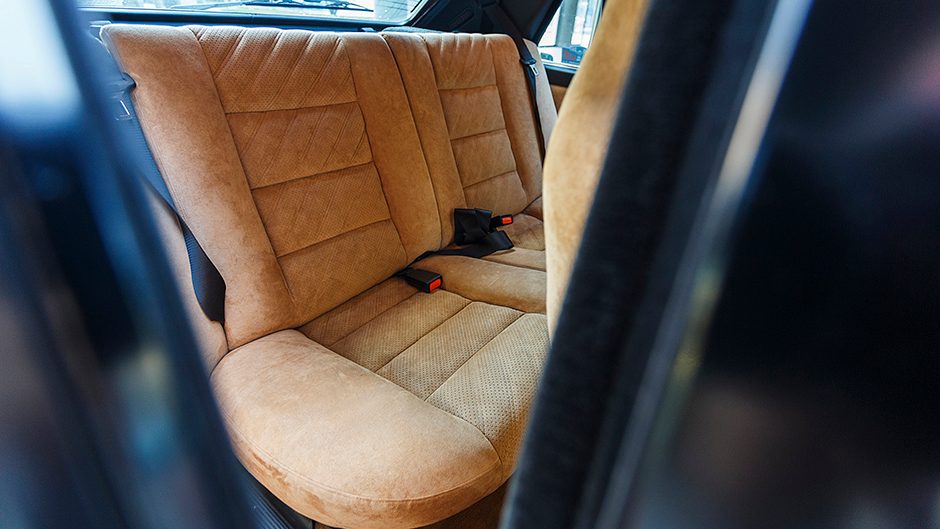
The purposeful flares co-existed with new venting, and an adjustable rear wing created a muscular aesthetic. The Delta was going out on a high, achieving eight victories at the hands of Didier Auriol and Juha Kankkunen and another manufacturer’s gong for Lancia. In 1993, it was all over. The Integrale became obsolete almost overnight with the works Abarth team pulling out of competition. Carlos Sainz took the Delta’s final WRC victory at the 1993 Acropolis. With three drivers’ and six manufacturer titles, the most dominant platform in WRC history had come to an end. While the rallying story had wrapped up, the road car tale hadn’t quite finished.
This is where this 1994 example, owned by Peter Sutcliffe, comes into the fray. Growing up with a father whose exploits involved test driving for Aston Martin, the native Englishman recounts a childhood peppered with interesting cars and mechanised interests. A string of motorcycles along with Alfa Romeo and Fiat machinery kicked off car ownership, while in later years a classic Mini Cooper provided entertaining mechanical therapy.
The interest in Lancia was piqued during the Group B years. While home in Nottingham on a university break during the 1985 RAC rally, Peter experienced what he defines as a “stellar” moment. Idling uncouthly at a set of lights was a pair of Delta S’s en route to Parc Ferme which snapped every neck within earshot. “From that moment I was a Delta fan.” The Delta’s shining competition career further solidified the lust for an Integrale along with rave reviews of the driving experience. Long-time ambition, coupled with hours of overtime was realised a few years back, with the acquisition of this red Delta.
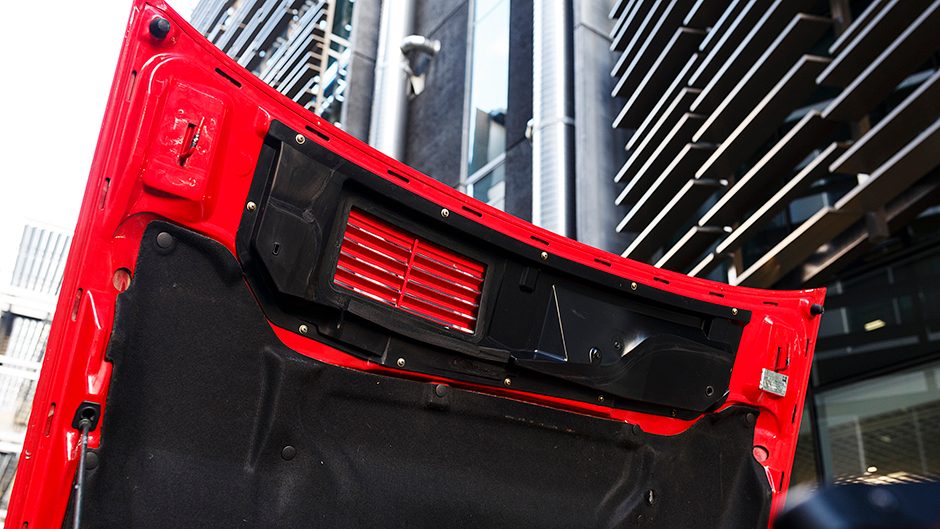
A ‘buy the best one you can afford’ mantra saw Peter’s search extend beyond Kiwi shores to the UK and Japan but ultimately it was the sole NZ-new Lancia Delta Integrale Evo which ended up in his garage. The car was originally owned by the official Kiwi Lancia importer, Peter Domett, for the first 20-odd years of its life. Unusually it’s a right-hooker, which is at odds with the LHD only production. Local rules dictated the conversion, seamlessly and easily carried out with lesser-model Delta interior components.
Peter’s Delta Integrale represents a perfect example of what is unofficially known as an ‘Evo 2’ car. Retaining the 16-valve twin-cam unit, Lancia’s engineers eked 215hp from the four-pot, in part thanks to a new Marelli ECU featuring electronic boost control and remapped ignition. A new water-cooled Garrett turbo helped the ultimate road-going Delta deliver a sucker-punch midrange while the 16-inch Speedline wheels mimicked the WRC tarmac rolling stock. Graciously, Peter threw the keys our way and told us to point the car at a twisty stretch of tarmac.
The stocky silhouette shows off early 80’s roots, immortalised by the aggression exerted in the bulges, vents and creases typical of the Delta’s rallying intent. Even opening the driver’s door feels undeniably Italian. The feeble click of the handle leads on to the hollow clunk of the door closing against its striker.
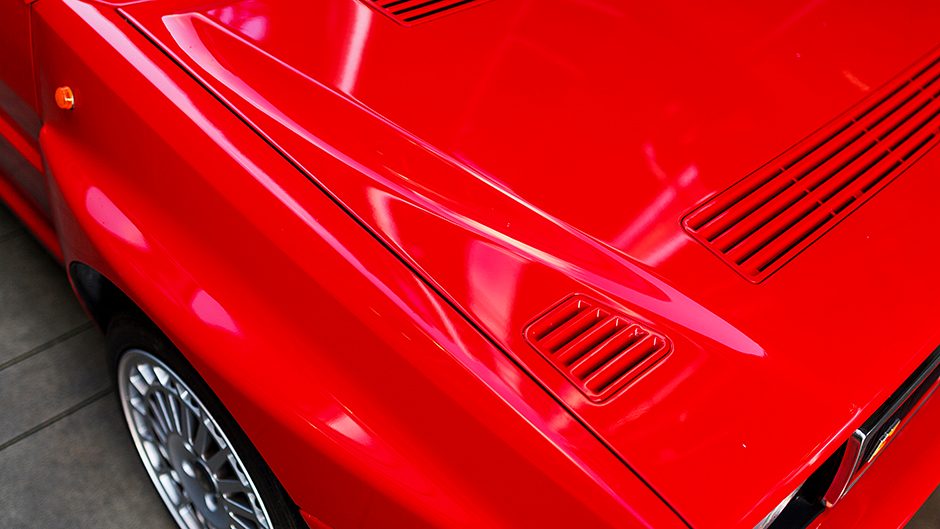
Anyone familiar with the build quality of Italian cars of the era could be excused for exiting with haste. This, of course, is before sinking into the enveloping security of the Alcantara-trimmed Recaro seats. It’s an odd sensation, juxtaposed somewhat by the squared-off instrument panel staring you in the face with all the subtlety of brutalist architecture. There’s an awful lot happening in there. Speed, boost, volts, fuel, revs, and a host of warning lights. None of which we hope to see fire up today, although fumbling for the unintuitive controls is certain to make the Delta newbie feel a bit awkward.
The driving position is typical of Italian hot hatches of the era, the driver sitting high amongst the airy glasshouse of the Delta, like you’re sitting ‘on’ rather than ‘in’ the Integrale. But as the first corner looms it begins to make sense. The Evo 2’s ‘wheel in each corner’ stance becomes innate to the driver. Placing each extremity of the car where you want is simple, gauging apexes with precision. And precise is the best adjective for the Delta experience. It begins with power delivery. The twin-cam makes no excuses for its 60-year-old roots, emitting a characterful if not slightly unrefined vibe. But it’s Italian, right? The Integrale possesses just the right amount of mechanical drama, throaty under foot with a note that belies the turbocharged nature.
Tipping the Lancia into a corner – the bits that Peter assure me really matter when pedalling an Integrale – the impression is unstickable. You pick your point, get on the firm but communicative brake pedal, turn in and mash the go pedal. It’s all so wonderfully analogue, the front wheels telling the leather-clad Momo wheel exactly what’s happening at the rubber-to-road interface. The front is pointy and direct and the rear just follows in its tyre tracks. Mountain-goat sure footedness, coupled with creamy midrange power from just below 3000rpm all the way to the mid-5000rpm mark makes the Integrale one of those cars you end up driving way too fast through the windy bits.
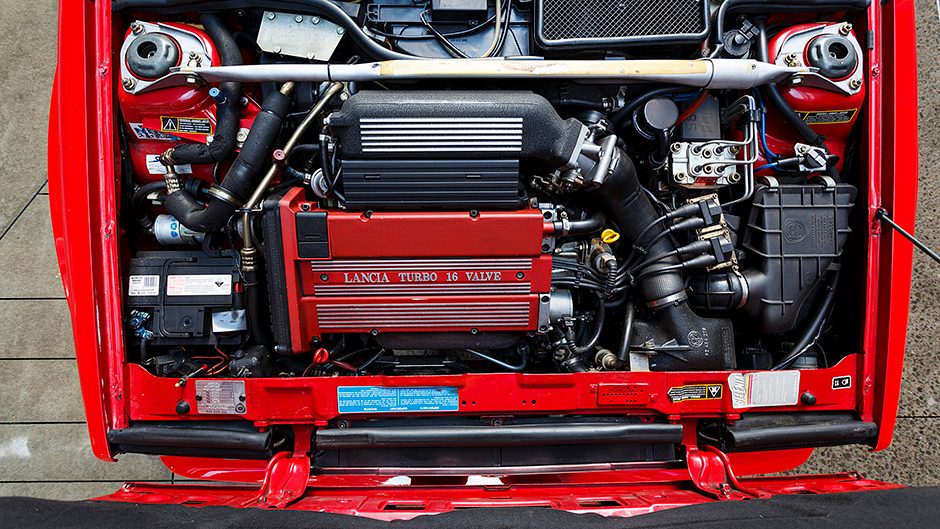
Lag is minimal, and keeping the engine in its power band is relatively easy thanks to close gear ratios. With 53 per cent of the torque directed rearwards, the Delta slingshots out of the apex, with even greasy conditions failing to incite any serious understeer. It’s all too easy to get wrapped up in believing you’re Juha Kankkunen, attacking the stages of the 1987 Monte Carlo with a point to prove.
The drive leaves one feeling every bit the world champion, with the grin to match. To think the introduction of Group A was perceived with some disdain by the rallying faithful. The Delta Integrale Evo proves otherwise.
Surely the chants of “bring back Group A” are starting now.


